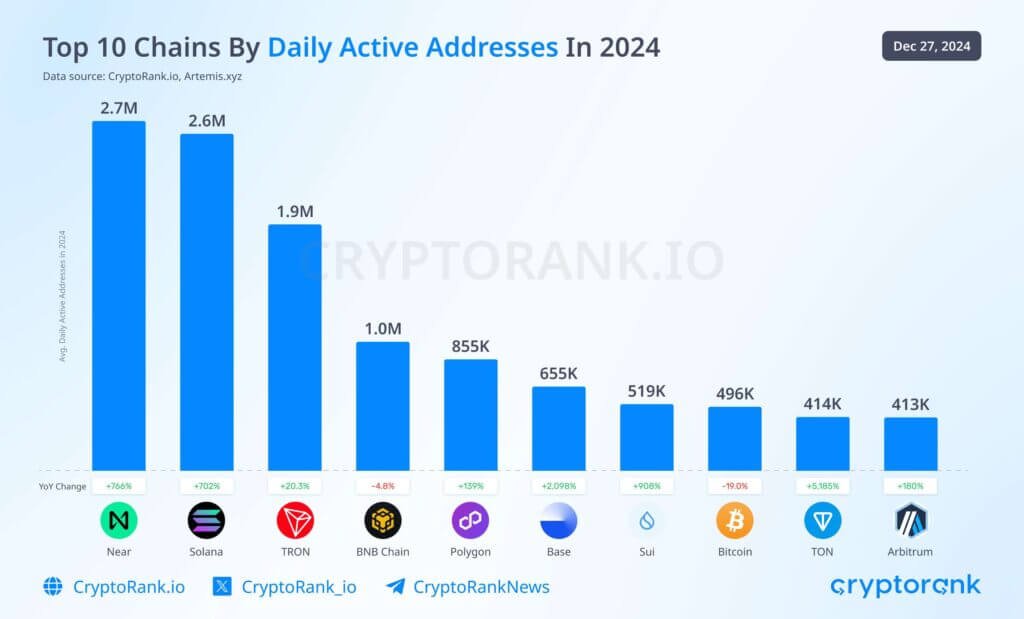To everyone’s surprise, NEAR Protocol took the lead on the leaderboard as the blockchain with the most active addresses in 2024.
It managed to surpass top contenders like Solana, Tron, and BNB Chain by a good margin, performing five or six times better than other reputable competitors such as SUI Network, TON, and Base.
While people are still scratching their heads about how NEAR Protocol pulled it off, attributing it to bots and wash trading, reminiscent of how in the Middle Ages they blamed everything on witches, let me break it down for you as a firsthand contributor to this remarkable 2024 achievement.
It’s true that NEAR aims to unleash the next trillion A.I. agents onto the blockchain, but until they roll out that plan, know that this latest achievement is thanks to decentralized applications running on NEAR, with one particular dapp carrying most of the daily active addresses throughout 2024.
That app is called HOT – a Chain Signature Protocol and multiplatform MPC Wallet.
And while NEAR Protocol already had a wallet called HERE, they partially ditched it in favor of an upgraded version running inside Telegram.
HOT has now become NEAR’s main dapp, evolving from a simple wallet where you could store your crypto into a full-fledged app where users can swap, mint, bridge, and purchase tokens, essentially interacting in a seamless, low-friction way with NEAR’s ecosystem, as well as other major blockchain infrastructures.
What made HOT wallet stand out
Clearly, it’s a cocktail of features, but the secret sauce that brought sustainable active addresses over the year is gamification.
With Telegram recently stepping into web3 with their own blockchain – The Open Network (TON) that allows apps to be built directly into the messenger app’s interface, projects have significantly reduced the friction that once required users to download an app.
Now, every Telegram user can access web3 apps directly in Telegram without needing to install anything else.
HOT created an enhanced version of NEAR’s original wallet, HERE, with improved design and gamification.
Here’s how HOT managed to sustain over 2 million active addresses on average throughout 2024:
The first layer of gamification includes a yield farming feature that lets users mine HOT – the upcoming ecosystem’s utility token.
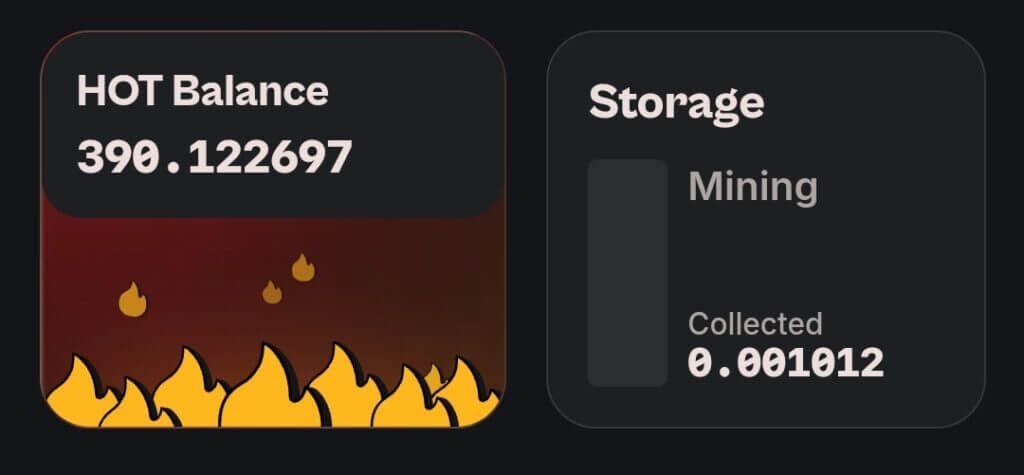
Every claim happens on-chain and requires a fee paid in NEAR each time a user wants to claim. Users benefit from a few free gasless claims by completing social tasks like following relevant social media channels. Once that option is exhausted, users need to transfer NEAR to cover the gas fees.
User-friendly HOT wallet addresses
Instead of the usual string of letters and numbers, HOT allows users to choose their own username ending in “.tg”. So, if they need to transfer NEAR to an address, all they do is input their “username.tg”.

They introduced a referral system where users who invite others receive a small percentage of HOT, about 10 percent, with 5 percent going to users referred by those they brought in, similar to a multi-level system.
This feature encourages more experienced players to explain the process to novices or those they’ve invited, even sending them NEAR from their own pockets to cover fees. Since the fees are very small, one minor transaction of 0.5 NEAR can last the entire year.
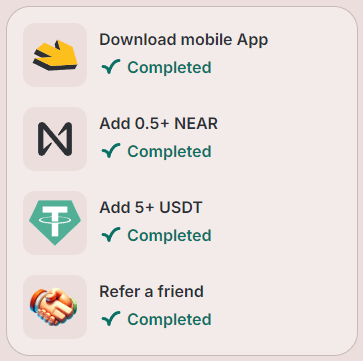
There’s a multiplier system for the amount of HOT users can claim by completing a few essential missions. One such mission involves transferring a small amount of NEAR to the wallet to afford fees.
This extrinsic incentive prompts those aiming to maximize their claims to learn how to transfer NEAR. Another mission involves downloading the native HERE wallet app, while another requires referring one friend. Users couldn’t reach the maximum multiplier without completing these tasks.

They gave airdrops, called FIREDROPS, constantly throughout the year, mostly from HOT community owners.
During the mining phase, every time a community member claimed HOT, a small percentage was added to the community’s pot. This stash could then be shared with new users to grow the community or given to existing members to reward their loyalty and dedication.
By this point, users were already claiming daily.
The next step to maximizing returns was through a series of upgrades, one affecting the speed at which HOT is mined or generated, and another the time interval at which users could claim their mined HOT.

Users pay for these upgrades with their mined HOT, which has no value at the time of writing because the TGE hasn’t occurred. This creates a deflationary mechanism and allows users to strategize their upgrades.
Early adopters benefited from increased mining speeds in the first month, allowing quicker upgrades with less hassle than later joiners. As months passed, the mining speed decreased twice to a steady state.
If you notice the spike drop in March, it’s because the mining speed hit a low, making upgrades and mining more HOT tougher.
This seemed futile until the HOT team introduced BOOSTERS, where users could get a daily boost in HOT by performing trades within the wallet. Depending on the swap size, users received a BOMB booster to detonate for additional HOT, speeding up upgrades or doubling daily mined HOT for those at max level.
This boost lasted a few months before being removed without notice. By then, HOT Protocol had enabled cross-chain bridges, increasing the number of missions. With each new blockchain integration, missions expanded, helping users, especially new ones, to mine HOT faster.
The sharp decline at the beginning of January 2025 is due to the removal of all missions as HOT prepares for the TGE event, possibly introducing new missions.
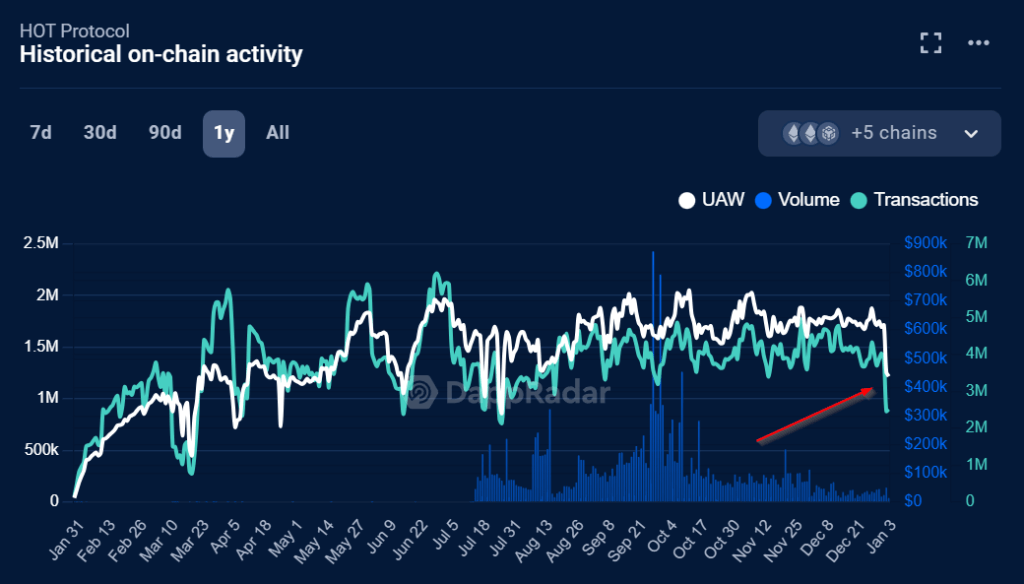
Limited-time events like the launch of meme tokens and NFTs, which users could buy with their mined HOT, also contributed to daily active wallets. Even without value, users traded their tokens for whatever value emerged. You can see 3-4 such spikes, indicating events performance and duration.
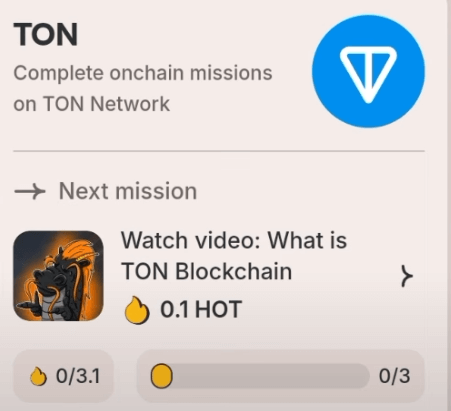
Another feature keeping interest was introducing educational YouTube videos, rewarding small amounts of HOT token for watching and entering codes from the videos.
While this analysis only scratches the surface, it gives a good impression of how NEAR Protocol ranked number one for most active addresses in 2024 with real human interaction, debunking naysayers’ claims of wash trading and bots.
Although it’s unclear how this model will remain sustainable post-TGE and after the speculation for extrinsic rewards ends, it’s noteworthy and appreciative to see a project apply gamification principles so effectively, paving the way for future developments.
The potential of a well-designed, human-focused gamification system is tremendous, and I’m excited for what the future holds.
For a more detailed analysis of HOT and NEAR Protocol, you can read this premium article I’ve published for free, hoping everyone can enjoy and learn from it, with an eye toward applying similar designs to other projects.
